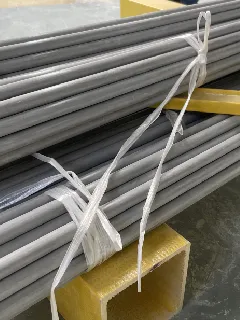loading...
- No. 9, Xingyuan South Street, Dongwaihuan Road, Zaoqiang County, Hengshui, Hebei, China
- admin@zjcomposites.com
- +86 15097380338
- Welcome to visit our website!
Innovative Solutions for Membrane Housing in Water Treatment Systems
The Importance of Membrane Housing A Comprehensive Overview
In recent years, the demand for efficient and sustainable water treatment solutions has escalated, making membrane housing an increasingly relevant topic in environmental technology. Membrane technology serves as a pivotal component in various applications, including water purification, wastewater treatment, and even in the food and beverage industry. This article delves into the significance of membrane housing, its various types, and the benefits it brings to modern filtration processes.
Understanding Membrane Housing
Membrane housing refers to the casing or structure that contains the membrane filtration modules used in various separation processes. These membranes facilitate the selective filtering of contaminants, allowing for the effective removal of impurities from water and other liquids. Various types of membranes are employed, including microfiltration, ultrafiltration, nanofiltration, and reverse osmosis membranes, each serving unique purposes based on the size of the particles they need to filter out.
The design of membrane housing is crucial because it must withstand the pressure of the liquids being filtered while securely housing the membranes. Effective membrane housing is engineered to provide optimal flow paths, minimize fouling, and ensure longevity. Selecting the right housing can significantly enhance the operational efficiency of membrane filtration systems.
Types of Membrane Housing
There are several common designs of membrane housing, each tailored to specific applications and environments
1. Single-Module Membrane Housing This design accommodates one individual membrane module and is often used for small-scale applications or pilot projects.
2. Multi-Module Membrane Housing As the name suggests, this design can house multiple membrane modules, optimizing the filtration process for larger operations. It is particularly beneficial in industrial applications where a high volume of liquid needs to be processed.
3. Cylindrical Shells Most commonly used for reverse osmosis membranes, cylindrical shells can endure high-pressure environments, making them ideal for desalination and water treatment processes.
4. Flat Sheet Housing This type features flat membranes placed in a parallel configuration within the housing. It is frequently employed in applications that necessitate a larger surface area for filtration, such as in wastewater treatment.
membrane housing

Advantages of Effective Membrane Housing
The integration of well-designed membrane housing in filtration systems offers various benefits
1. Enhanced Filtration Efficiency Proper housing ensures optimum flow distribution, minimizing dead zones and maximizing contact between liquids and the membranes. This enhances the overall efficiency of the filtration process.
2. Durability and Longevity High-quality materials used in membrane housing construction, such as stainless steel or high-strength polymers, provide resilience against corrosion and wear. This extends the lifespan of both the housing and the membranes.
3. Reduced Maintenance Costs Effective membrane housing minimizes fouling and scaling, which are common issues that require frequent cleaning or replacement. This not only reduces operational downtime but also lowers maintenance costs over time.
4. Scalability Membrane housing systems can be designed with scalability in mind. This flexibility allows businesses and municipal operations to increase their filtration capacity as demand grows without requiring an entirely new system.
5. Environmental Sustainability By improving water treatment efficiency, effective membrane housing can contribute to sustainable practices by conserving water resources, reducing energy consumption, and minimizing waste.
Conclusion
The role of membrane housing in water treatment and various industrial applications cannot be overstated. As we face increasing environmental challenges, the demand for efficient and sustainable filtration solutions will only continue to rise. With advancements in technology and materials, the design and application of membrane housing will evolve, fostering more innovative approaches to filtration and separation processes. Ensuring that we invest in quality membrane housing is crucial for harnessing the full potential of membrane technology and promoting a more sustainable future.
As industries and municipalities increasingly look toward membrane solutions for their water treatment needs, understanding the importance of membrane housing will be essential for optimizing these systems in the years to come.
-
Transform Your Spaces with FRP Grating SolutionsNewsNov.04,2024
-
The Versatility and Strength of FRP RodsNewsNov.04,2024
-
The Excellence of Fiberglass Water TanksNewsNov.04,2024
-
The Benefits of FRP Grating for Your ProjectsNewsNov.04,2024
-
Elevate Your Efficiency with FRP Pressure VesselsNewsNov.04,2024
-
Welcome to the World of FRP Pressure VesselsNewsOct.12,2024
-
Unveiling the Future of Filtration: Why FRP Filter Vessels are a Game ChangerNewsOct.12,2024
